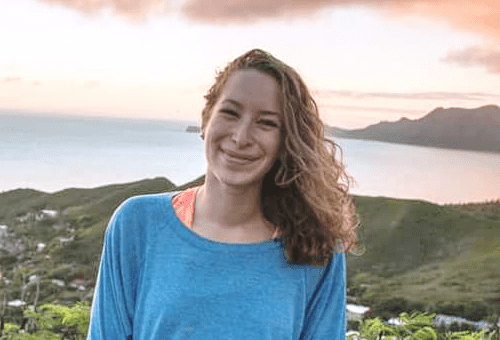Might police shootings of unarmed African Americans have anything to do with state-level structural racism? Anita Knopov from Boston University joins us to talk about her study “The Relationship Between Structural Racism and Black-White Disparities in Fatal Police Shootings at the State Level,” published in The Journal of the National Medical Association in April 2018, and co-authored with Michael Siegel and five other researchers.
Websites and other resources
- NAACP’s 2017 Travel Advisory for the State of Missouri
- Mapping Police Violence project
Press coverage
The Intercept | Huffington Post | phys.org | Boston University | Science Daily | U.S. News & World Reports
Bonus Clips
Patrons of Parsing Science gain exclusive access to bonus clips from all our episodes and can also download mp3s of every individual episode.
Support us for as little as $1 per month at Patreon. Cancel anytime.
Patrons can access bonus content here.

We’re not a registered tax-exempt organization, so unfortunately gifts aren’t tax deductible.
Hosts / Producers
Doug Leigh & Ryan Watkins
How to Cite
Leigh, D., Watkins, R. & Knopov, A. (2018, May 30). Parsing Science – Structural Racism & Police Shootings. figshare. https://doi.org/10.6084/m9.figshare.6387800
Music
What’s The Angle? by Shane Ivers



Racism is an issue that touches all spheres of American life. lastly, Doug and I wanted to hear from Anita about her views on the challenges of discussing racism and gun violence in medical and public health contexts.@rwatkins says:
For the fields of medicine and public health, the disproportionality of police violence against Black people is a relatively new topic of empirical research. and as communities across the US look to scientists to help find solutions to the problem, both disciplines have valuable perspectives and tools to bring to the table. We asked Anita to describe what she believes her research and that of others in medicine and public health might contribute to it's resolution.@rwatkins says:
The National Medical Association is the largest and oldest nation-wide organization in the United States that represents African American physicians and their patients. We followed up by asking Anita what led her to seek publication in their medical journal.@rwatkins says:
As Anita's study illustrates, scientific research regarding police violence can inform a number of important policy decisions at the local, state, and national levels. Ryan and I asked Anita what kinds of research her team will be up to next, and what sorts of studies they'd like to see other researchers take on.@rwatkins says:
Implicit bias is the relatively unconscious and automatic aspects of people's latent prejudices and social behaviors. It can lead us to act in prejudiced ways without recognizing it, or realizing too late. while not a focus of their study, the results of Anita's research suggest some interesting connections with how implicit bias may come into play in police shootings of unarmed people, as she discusses next.@rwatkins says:
Understanding why disproportionally more Black people are fatally shot by police has led to two predominant theories. In their study, Anita and HER team used their state-level data to examine both the "threat hypothesis" and the "community violence hypothesis," to determine if either is consistent with their findings. here, Anita describes both of these theories, as well as what evidence they found supporting each.@rwatkins says:
Equally challenging as measuring structural racism is the task of accessing nation-wide data on fatal police shootings that's considered to be comprehensive, valid, and reliable. Anita discussed the options that she and her team considered before selecting the Mapping Police Violence dot com database as their source for police shooting data.@rwatkins says:
State-level Structural racism ranged from 26 points to 75 points on their scale - about a 50 point range. Anita's research showed that police shootings of unarmed Black people in the most racist states were up to 125% more common than that in the least. In addition, the team found that each 10-point increase in a state's Economic Disparity and Employment Disparity, the ratio of police shooting deaths jumped 40% and 33%, respectively. Ryan and I wondered what surprised Anita most about these dramatic findings.@rwatkins says:
People of color routinely face structural barriers when it comes to securing quality housing, healthcare, employment, and education. Due however to the many institutional policies and practices involved, measuring these barriers can be challenging. Anita next shared with us how her team went about creating a scale for determining the degree of structural racism at the state level. @rwatkins says:
In the United States, fatal police shootings of unarmed victims have gained nation-wide attention, particularly since Michael Brown was shot by police in Ferguson, Missouri in 2014 and the subsequent prominence of the Black Lives Matter movement. AS A a multi-disciplinary group of researchers, Anita and her colleagues' Work provides a unique perspective into this problem, so Ryan and I began by asking her to tell us more about what motivated the team to take on this complex and challenging issue.